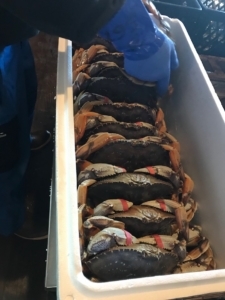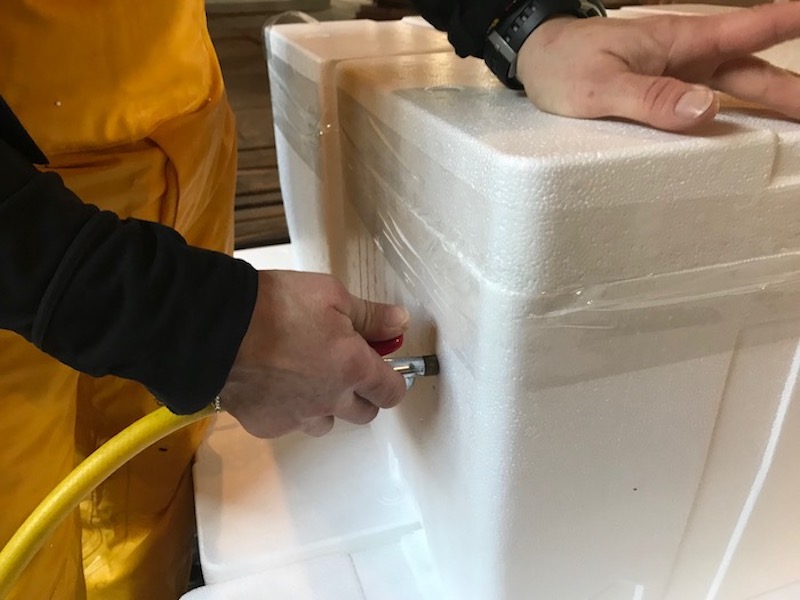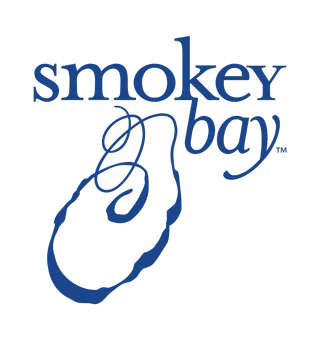Why is Dungeness Bay Crab better?

For over a dozen years Smokey Bay Seafood has been exporting crab from the Pacific Northwest. The crab we source comes from both the USA and Canada as the fishing area crosses the international boundary. The body of water, Puget Sound, and the Strait of Juan de Fuca are shared by both countries. Differences in crab is not its nationality. But the marine environment from which it is harvested.
This blog post aims to give some general background on the Dungeness crab industry in our region and the key factors Smokey Bay considers when packing and shipping Dungeness crab.
The first thing we consider is whether the crab was caught in a sheltered coastal waters, such as a bay or an inlet such as Puget Sound or if it is ocean crab harvested in the open water off the continental coastline such as the West Coast of Vancouver Island, or the Oregon coast. If the crab comes from an area that is more sheltered, there tends to have more nutrients in the water and the crab is hardier, harder shell with more meat content. If the crab comes from a more open ocean environment, it tends to have a softer shell and less meat fill. These are general rules of thumb, there are exceptions. Typically, Ocean Dungeness crab is more for domestic sales, and has a cheaper price point than Bay Dungeness crab. Bay crab tends to go for export markets at a premium price. In addition to be sold live Ocean crab is often cooked and frozen then sold either whole or in sections.

The Smokey Bay crab packing plant in Anacortes Washington focuses primarily on live Bay crab for its customers. Some export markets call our type of Dungeness purple or black crab as opposed to the term white or yellow crab for the open Ocean variety.
Dungeness crab are trapped in a baited box cage that allows the crab to come in but not get out. The Crab Fisher drop their trap to the ocean floor and attaches a rope and float to identify and retrieve it later. Cages can be left for a day or a few days. The bait used varies – octopus, squid, mink carcasses, butter clams or fish heads. Smokey Bay Seafood sells crab bait to fishermen and the choice of bait is a subjective choice for the crabber depending on success they’ve had with previous types of bait in the location that they are fishing.
In order for a crab to be legally harvested, it must weigh more than one and a half pounds. The size grade for crab is typically three categories. One and a half to 2-pound crab (standard 1.7-pound average), 2 pound up crab (large 2.2-pound average), and ocean run crab. The standard crab is the usual size for domestic sales, the large crab is typically exported, and ocean run crab is a mix of sizes, and typically sold to local retail or traded with other crab Packers. A Dungeness crab is seldom over 2.7 pounds.
The Dungeness crab business is divided into live crab, and frozen whole cooked crab or sections. Smokey Bay business is live crab. The industry itself is divided into commercial and tribal harvest. Smokey Bay works with both the commercial and tribal Dungeness crab fishery. All Dungeness crab is Wild caught there is no aquaculture for crab.

The market price for live Dungeness crab varies weekly. It’s a volatile market especially recently as the governmental management of the fishery has frequent openings and closings, which can radically affect supply from week to week. Price for live dungeon crab can vary throughout the year from as low as $6.50 a pound to as high as $13 a pound based on minimum order of 675 pounds.
The Crab Fisherman empties his crab traps into large totes, which are then offloaded at our crab packing facility and promptly put in wet storage tanks filled with clean ocean water. We are lucky in that we are able to use clean ocean water rather than reconstituted marine water. This is because our facility is on a pier above the ocean water. There are also crab packers located further inland that use salt and water mix to hold their crab. Regardless of the water source, all water is constantly circulated in the tanks and kept clean by a mix of filtration and UV light, filtration can be made from a medium of sand, charcoal, and even oyster shell.
Once our crab is received at the plant, it is banded with elastic rubber bands around their claws, to prevent them from being aggressive with their cohorts. It also serves to keep the quality of the crab and claw intact. The Crab is held in tanks circulating ocean water and can be kept in good condition for a few weeks if necessary. But is usually just held for a few days prior to shipping.
Then 24 hours prior to shipping the water is reduced in temperature to 2°C. This is the initial stage to prepare the crab for transport and air shipment. As the crabs body temperature is reduced it goes into a dormant/sleep state. Crab is held in the cold water tanks right up until an hour or so from departure of the packing plant. Then the banded crab is removed from the tank and put into Styrofoam cases by hand stacked into rows claws up, 45 pounds per case (20.4 Kg per case), newsprint and gel packs are then placed on the crab. The lid is sealed, and a hole is made in the lid of the case where oxygen is pumped in using a hose and scuba tank.

Oxygen is pumped in the case and the hole is sealed with a thick sticker. The Styrofoam cases of crab are promptly loaded onto the delivery truck for a 3-hour journey to either Vancouver International Airport YVR or Seattle Tacoma International Airport SEA. The Dungeness crab arrives at the airport in the evening for overnight or early morning flights departing to Texas (DFW, AUS, MSY), Singapore SIN, Taiwan TPE, Vietnam SGN HAN, Toronto YYZ.
Typical order size range in the 15 to 30 x 45 pounds case range. We have capacity to pack up to 70 x 45 pounds cases each day. Our customers pick up crab at the destination airport’s air cargo facility the following morning. The transit time for our crab is kept to under 24 hours. Once our crab is received, it is either distributed directly to food service or retailers, some have wet storage tanks to hold the live crab for distribution throughout the week. Mortality is kept to a minimum. However, an allowable loss of up to 5% is an acceptable industry standard. Though in most instances this seldom is needed.
Smokey Bay, reputation for quality crab has kept us in good shape with our customers over the past 15 years. If you have any questions, please feel free to ask.
Patrick Warren is the founder of Smokey Bay Seafood Group, which has been in continuous operation since 1998. He has extensive experience in the seafood industry, including work in both shellfish aquaculture – manila clam, pacific oysters, and wild fisheries such as dungeness crab, geoduck, wild salmon, and crustaceans. He has developed long lasting export programs to Asia, Europe, and North America. Patrick’s career also includes collaborative projects with tribal and First Nations communities and expertise in aquaculture feeds such as krill and algae production. He holds a postgraduate degree in geography and environmental planning. Additionally, Patrick is the majority shareholder of Sebastian Stuart LLC a legacy dock and pier in Anacortes, Washington, and the founder of Eldorado Square in New Denver, BC. He also served as Park Board Commissioner for Vancouver, BC at a time that significant decisions were made for the city’s parks, aquarium, sea wall, and community centers.
